What is Hip Dysplasia?
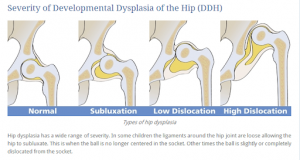
Hip dysplasia occurs when a baby’s hip socket is too shallow to cover the head of the thigh bone to fit properly1. In general, developmental dysplasia of the hip is instability or looseness of the hip joint.
Hip Joint Anatomy Overview
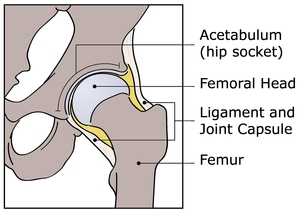
The hip joint is a ball (femoral head) and socket (acetabulum) joint held together by ligaments.
Babies are naturally flexible due to the soft cartilage surrounding the hip joint; this causes the socket to be loose. This instability and soft cartilage puts a baby’s hips at risk of deforming the hip socket (dysplasia) or causing the ball of the hip to slip out of the socket (dislocation).
Overtime, the cartilage surrounding the hip joint becomes stronger and a baby’s hips are less likely to develop hip dysplasia.
Signs and Symptoms of Hip Dysplasia
- Asymmetry: skin folds of the thigh or buttocks may appear uneven.
- Hip Click: there may be a popping sensation with movement of the hip.
- A snapping sound can occur in normal hips from developing ligaments around the joint2
- Limited hip range of motion
- Difficulty changing a baby’s diaper
- Swayback: painless, exaggerated waddling limp or leg length discrepancy; after learning to walk2
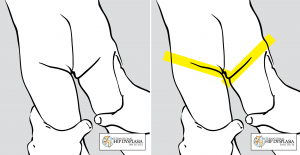
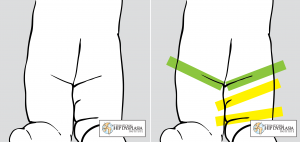
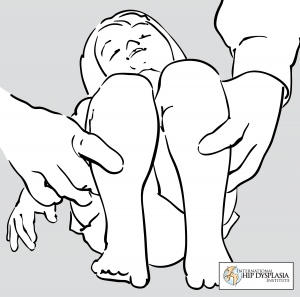
Causes of Hip Dysplasia in Babies
Family history: 12 times more likely to occur when there is a family history2
Female: 8 in 10 cases are female2
Firstborn Child: 6 in 10 cases occur in first born children2.
Breech Position: While in the womb, the baby’s bottom is below their head. This can lead to one or both legs extended rather than in the fetal position. This position can put a baby at a higher risk of poorly developed hip joints1.
Tight Swaddling: Wrapping a baby tightly with legs in a straight position may lead to hip instability, ultimately leading to hip dysplasia. When swaddling or wrapping a baby in a blanket allow the legs to bend and move.

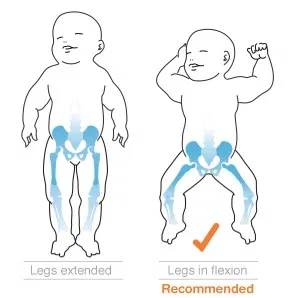
How is Hip Dysplasia Diagnosed?
- Physical exam
- Imaging: ultrasound or x-ray
Non-Surgical Treatment Options
Non-surgical treatment typically consists of bracing the hips to be kept in a better position. This also helps to hold a position to promote a natural growth process and to create a more stable hip joint2.
- Pavlik Harness: allows movement and a position for the hips to be well aligned
- Hip Abduction Brace: hold the legs apart with the hips flexed up
- Physical Therapy: physical examination, monitoring, hip strengthening, muscle stretching
A well rounded approach to treating hip dysplasia is beneficial for infants and children. They are able to improve hip position and increase strength for stability of the hip joint.
If your child or someone you know is experiencing any of the above signs or symptoms then please call our office today. We would be happy to answer your questions and discuss your concerns.
Sources:
- Boston Children’s Hospital
- International Hip Dysplasia Institute
Photos:
- International Hip Dysplasia Institute
- Dino PT
